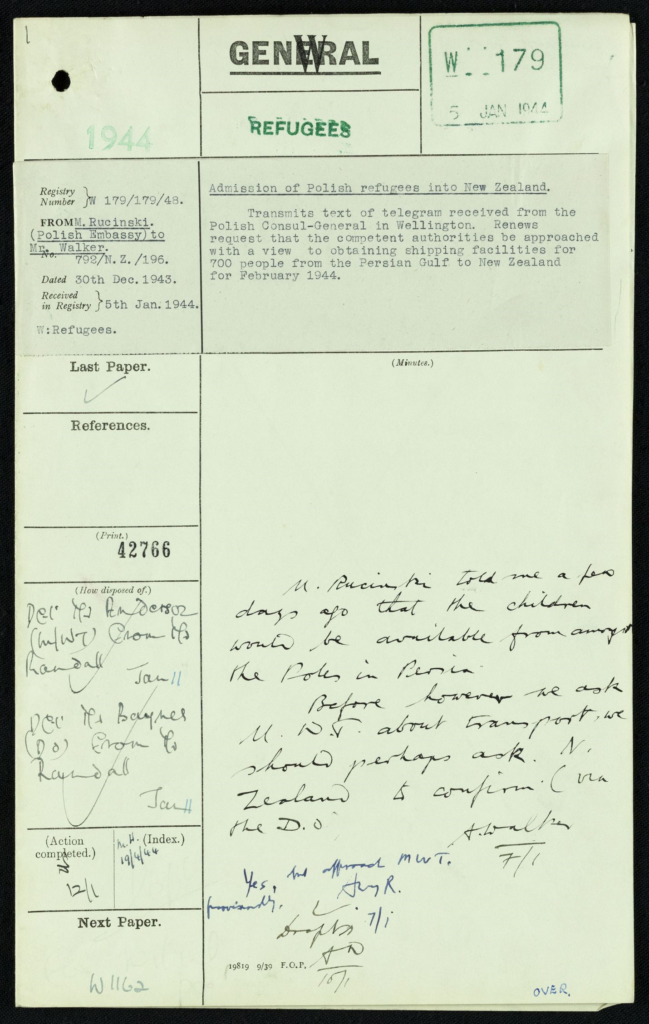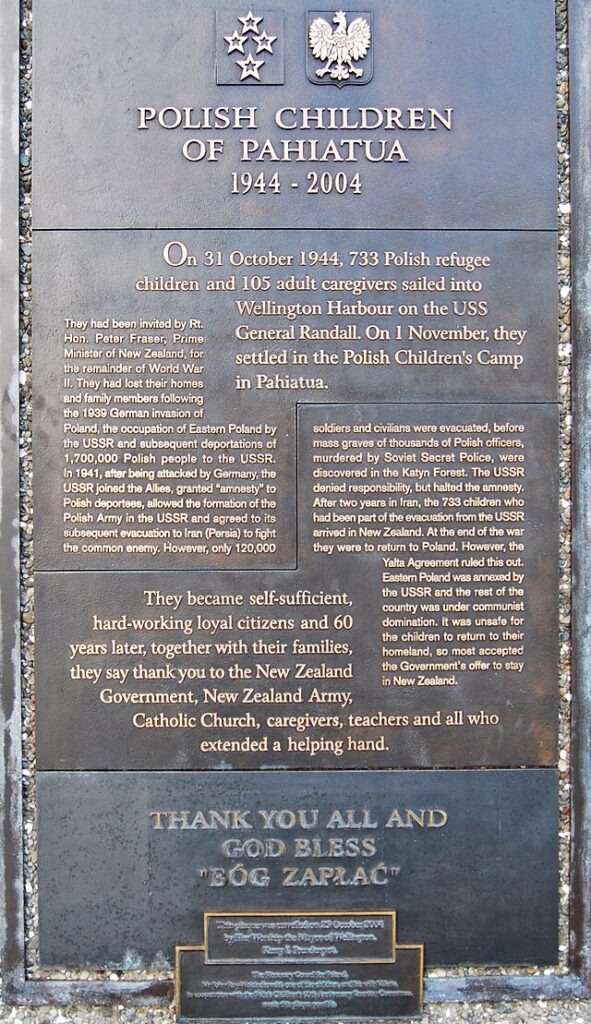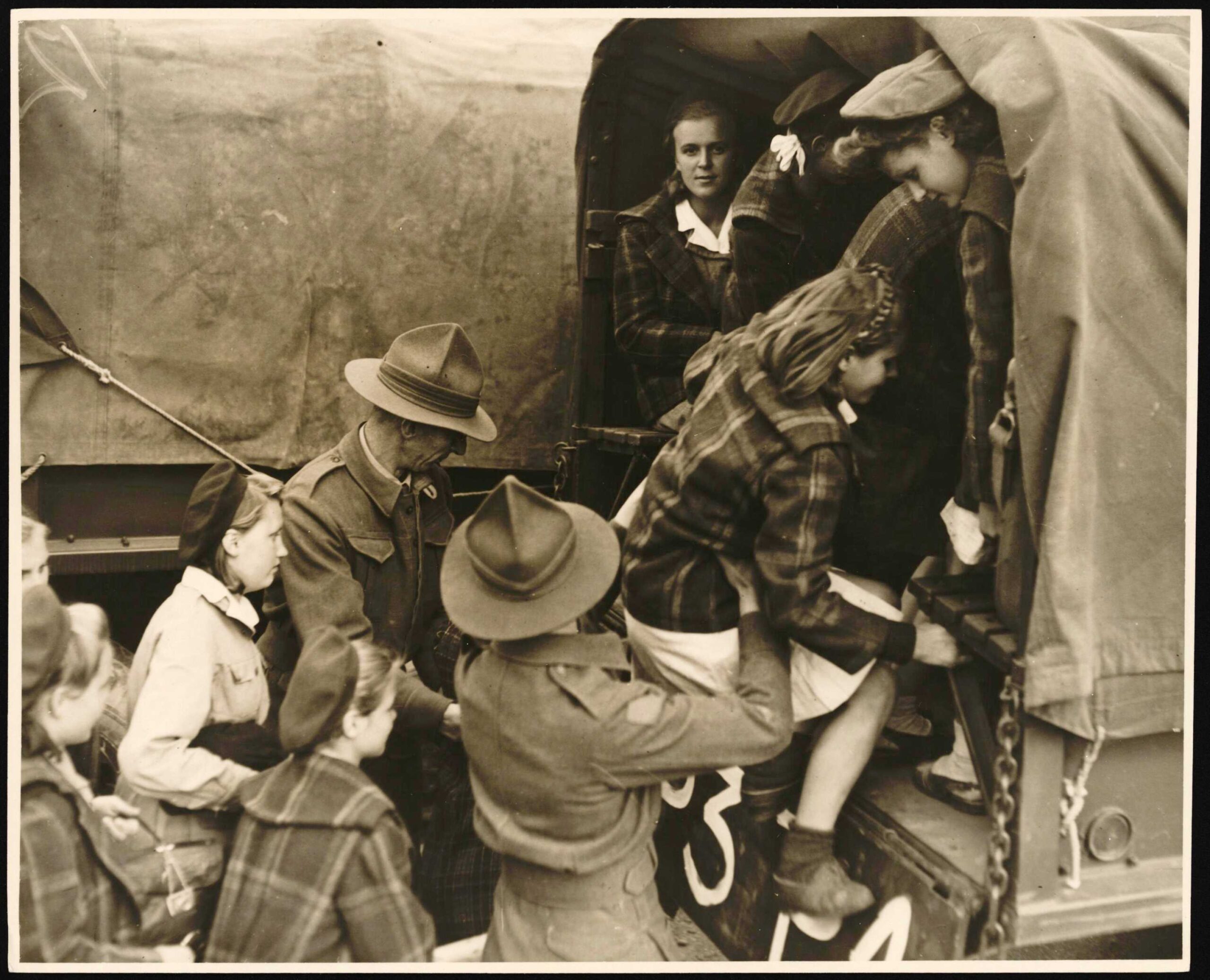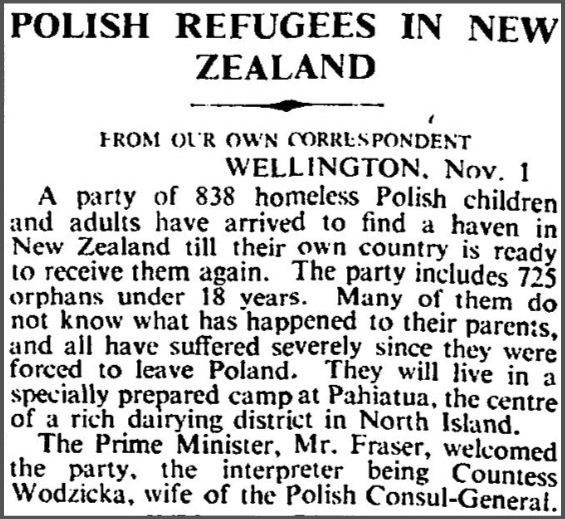│By Damian Almeida, Training and Digital Communications Executive, Gale│
In the midst of World War II, there are many stories of bravery, loss, and unexpected kindness. One such story that often goes untold is that of the 700 orphaned Polish children who found refuge in New Zealand. This is the story of their journey, the circumstances that led to their displacement, and how New Zealand became a sanctuary for these young survivors.
The Background
During World War II, Poland was one of the first countries to be invaded by Nazi Germany in September 1939, followed by the Soviet Union from the east. This dual invasion led to immense suffering, with millions of Poles, including children, becoming victims of war, disease, and starvation. Many children were orphaned or separated from their families due to the chaos of war.
A few months back while researching content for a training session I stumbled across a Foreign Office document (FO 371/42766) from the National Archives (Kew, United Kingdom) available in Gale’s Refugees, Relief and Resettlement archive about the admission of Polish refugees into New Zealand and was intrigued.

Using the Term Frequency Tool
I used the term frequency tool searching for key terms “Polish Orphans” and “New Zealand” to learn more about this intriguing story, which helped to narrow my search down to documents containing both terms.
The Pahiatua Children

In 1944, as part of a humanitarian effort, New Zealand agreed to take in 733 Polish children, along with their caregivers, who had been displaced by the war. These children, known as the “Pahiatua Children” after the town where many were initially housed, arrived as part of a larger group that had been evacuated from Poland to the Soviet Union and then Iran eventually making their way to New Zealand. New Zealand Prime Minister Peter Fraser, defying bureaucratic hurdles and public scepticism, offered them a temporary home. This act of compassion was unprecedented, making New Zealand the only country in the world to accept such a large group of refugee children during the war.
Journey to New Zealand
When Russia invaded Poland from the east it’s estimated that approximately 1.5 million Polish nationals were deported from Poland by the Soviets, this evacuation was part of a broader movement of Polish civilians to Siberia. When Germany attacked, Russia aligned with the allied powers. An agreement in 1941 between the Russians and the Polish government in exile provided the Polish refugees freedom from the labour camps and prisons they were being held in. The first major leg of the children’s journey was from Siberia, Soviet Union to Iran (then Persia) in 1942.
Many children arrived in Iran malnourished, sick, or dying due to the harsh conditions they endured. In Iran, the children were cared for by the Polish government-in-exile, British authorities, and various relief organisations. Here, they received medical care, food, and schooling, but Iran was only a temporary haven.
The Polish authorities initially decided to transport the children to Jamnagar, a city in the western Indian state of present-day Gujarat. However, following reports received from Jamnagar it appears that despite the energetic efforts of the Indian health service the climatic conditions in the camp did not suit Polish children. In fact, 45% of the children were known to be suffering from malaria and there were also frequent recurrences of the disease.
The New Zealand government, in a humanitarian gesture, offered to host a group of these children. Prime Minister Peter Fraser was instrumental in this decision, influenced by his wife Janet Fraser, who was involved in welfare work. In view of these circumstances the Polish authorities decided it was best to avail themselves of the generous offer of the New Zealand Red Cross and transfer these children directly to New Zealand.
The journey of these children was harrowing to say the least, they were eventually transported to New Zealand aboard a troop ship in basic troop deck accommodations.
Their arrival in Wellington on 1st November 1944 with returning New Zealand soldiers was met with warmth and sympathy from New Zealanders, marking the beginning of a new chapter in their lives.
Life in New Zealand
Upon arrival, the children were placed in a camp in Pahiatua, which became known as the “Polish Children’s Camp”. It had been converted from a military training camp into a more child-friendly environment. Here, they received education, medical care, and psychological support. Efforts were made to preserve their Polish culture through language classes, cultural events, and maintaining Polish traditions.
Integration and Challenges
Integrating into New Zealand society was not without its challenges. The children had to adapt to a new language, culture, and environment. However, the New Zealand government and local communities played significant roles in easing this transition. Many of the children eventually adopted New Zealand as their permanent home, while others returned to Poland or moved to other countries after the war.

Legacy
The story of the Pahiatua Children is a testament to human resilience and international solidarity. Today, many of these children, now elderly, still live in New Zealand. Their experiences are a poignant reminder of the war’s impact on civilians, particularly children, and how acts of kindness can shape lives across generations. Their journey has been documented in several books and films, ensuring that future generations understand the hardships they endured and the sanctuary they found in New Zealand.
A Story of Hope
The narrative of the 700 orphaned Polish children in New Zealand is more than a historical footnote; it’s a story of hope, recovery, and the enduring spirit of humanity. It highlights how, even in the darkest times, acts of compassion can light the way forward.
As we remember their journey, we are reminded of the importance of empathy and support in times of crisis, values that remain crucial in our world today. Though intended to be temporary, the children’s stay in New Zealand extended beyond the war’s end. Many chose to remain, becoming valued members of New Zealand society, contributing to various fields and enriching the nation’s cultural fabric.
If you enjoyed reading about the orphaned Polish children of New Zealand, check out these posts:
- New Zealand – Trailblazers in Women’s Suffrage
- Refugee Nurses and the Second World War
- Humanity and Courage: Refugees and the Memory of Those Who Saved Them
Blog post cover image citation:
Archives New Zealand, CC BY 2.0 <https://creativecommons.org/licenses/by/2.0>, via Wikimedia Commons https://upload.wikimedia.org/wikipedia/commons/7/7f/Polish_refugees_arriving_in_New_Zealand_%28Image_9%29.jpg



